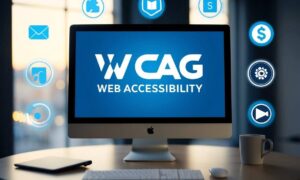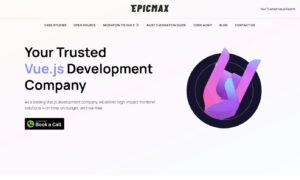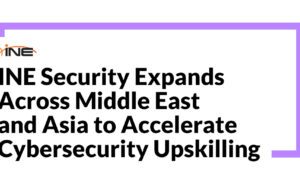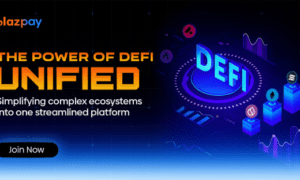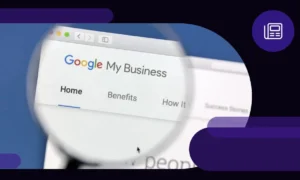In this digital era accessibility-focused web browsers are setting new standards for digital inclusion. The innovative solution, developed by Karthikeyan Dhanasekaran, a technology researcher based in the USA, aims to transform how users with diverse disabilities experience the internet.
The Digital Divide Challenge
Despite the internet’s central role in modern life, millions of users with disabilities face significant barriers when accessing online content. Current statistics reveal a stark reality – only 2% of the top one million websites fully comply with basic accessibility standards, leaving a vast majority of online spaces difficult or impossible to navigate for many users. The traditional approach of relying solely on website developers to implement accessibility features has proven insufficient in addressing this growing digital divide.
Smart Technology at the Core
The browser employs advanced machine learning algorithms to dynamically modify web content in real-time, offering tailored solutions for various disabilities. Rather than requiring websites to be pre-configured for accessibility, the technology actively adapts content as users browse, effectively bridging the gap between non-compliant websites and accessibility needs. The browser’s architecture incorporates specialized modules that work together seamlessly to process and adapt web content efficiently, ensuring a smooth user experience.
Personalized Experience
What sets this browser apart is its highly customizable interface that caters to specific disability requirements. For users with visual impairments, it automatically adjusts color contrasts and provides intelligent image descriptions. Those with dyslexia benefit from customizable text formatting and specialized font options, while individuals with ADHD can utilize distraction-blocking tools and focus enhancement features. The browser also includes customizable navigation shortcuts and personalized content presentation options to accommodate different user preferences and needs.
Breaking Language Barriers
The innovation extends beyond traditional accessibility features by incorporating cultural and linguistic adaptation tools. The browser can simplify complex vocabulary, explain idiomatic expressions, and provide context for region-specific content, making the web more accessible to users from diverse cultural backgrounds who may also have disabilities. It offers real-time cultural context explanations and automatic detection of culturally-specific terms, ensuring a more inclusive browsing experience for users worldwide.
Performance That Matters
Initial testing shows remarkable improvements in user experience. Task completion rates have increased by 36.9%, while average task completion time has decreased by 37.5%. User satisfaction scores have shown a significant 49.1% improvement compared to standard browsers, demonstrating the technology’s real-world impact. The browser’s ability to maintain performance while implementing complex accessibility modifications showcases its efficient design and optimization.
Privacy and Security First
Understanding the sensitive nature of accessibility needs, the browser prioritizes user privacy. All content modifications occur locally on the user’s device, with no personal data transmitted to external servers. This approach ensures users can browse confidently while maintaining their privacy and security. The browser implements robust security measures to protect against potential vulnerabilities that might arise from content modifications and unauthorized access attempts.
Future of Web Accessibility
The browser represents a paradigm shift in how we approach web accessibility. Instead of solely relying on website creators to implement accessibility features, this technology empowers users with tools to make any website more accessible. This approach could potentially revolutionize digital inclusion efforts and set new standards for web accessibility. The browser’s success demonstrates that technology can effectively bridge the gap between non-compliant web content and accessibility requirements.
The Road Ahead
While the current version shows promising results, ongoing research focuses on improving content adaptation algorithms, exploring legal and ethical implications of automated content modification, and investigating ways to integrate these features into mainstream browsers. Future developments will likely include enhanced support for emerging web technologies, improved performance optimization, and expanded customization options. The integration of cloud-based processing for computationally intensive adaptations could further improve the browser’s capabilities on less powerful devices.
Empowering the Disabled Workforce: A Step Towards Inclusivity
Beyond enhancing digital accessibility, the evolution of technology, such as the browser described, presents a unique opportunity to address broader societal challenges, including improving employment rates for individuals with disabilities. As the demand for digital accessibility grows, so does the need for skilled professionals in fields like web development, accessibility testing, and UX design. This offers a significant opportunity to hire and train a more inclusive workforce, ensuring that people with disabilities can play an active role in shaping the future of digital inclusion.
Efforts to hire individuals with disabilities in the tech sector can help close the disability employment gap. Companies that prioritize diversity and accessibility not only foster innovation but also bring a valuable perspective to the design and development of accessible technologies. By investing in training programs, mentorship, and tailored employment opportunities, businesses can empower individuals with disabilities, providing them with meaningful careers while benefiting from their unique insights into accessibility challenges.
Moreover, integrating inclusive hiring practices into the digital accessibility sector encourages companies to move beyond merely adhering to compliance standards and to actively support the broader community of disabled users. It is through such efforts that we can create a more equitable digital environment, where both the technology and the workforce reflect the diverse needs of all users.
In conclusion, this innovative browser developed by Karthikeyan Dhanasekaran represents a significant step forward in making the internet truly accessible for all users. By combining advanced technology with user-centric design, it offers hope for a more inclusive digital future where disability doesn’t determine one’s ability to access and benefit from online resources.




